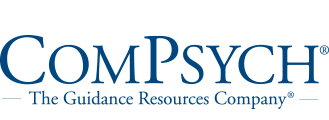For eating disorders awareness week, let’s dive into awareness of exercise in eating disorders. While initial intention for exercise can often be derived from achieving optimal health, exercise can become disordered or enmeshed in an eating disorder. Here are six ways exercise can be disordered, followed by introspective questions for each one:
- Compensatory Exercise: Compensatory exercise is exercise with the intention of making up for food, calories, meal plan, or foods a person identifies as “bad.” In reverse, it could also be the intention of exercising to earn food later or permission to eat.
- Questions to ask yourself: How often do I exercise to make up for food, calories, or meals? How often do I exercise to earn food?
- Excessive Exercise: Excessive exercise is participating in more exercise than the person’s body is fueled for. Excessive exercise can also be identified by inadequate rest and recovery from exercise or training bouts. Indicators of excessive exercise could be identified by indicators on the RED-S model (relative energy deficiency in sport).
- Questions to ask yourself: Do I take rest days? Can I identify any RED-S concerns on the chart? Does my registered dietitian have concerns with the total amount of exercise each week based on my meal plan?
- Compulsive Exercise: Compulsive exercise is characterized by how often a person is thinking about exercise throughout the day and how often a person feels that they have to act on the urge to exercise. Rituals and routines with fear of something bad happening if they are not completed tend to show up in compulsive exercise patterns.
- Questions to ask yourself: How often do I think about exercise throughout the day? If I’m not able to do the exercise I hoped for the day, what kind of reaction does that evoke in me?
- Exercise Avoidance: Avoiding exercise, either certain types of exercise or all exercise.
- Questions to ask yourself: Why am I avoiding exercise or this type of exercise? Although my action is avoiding exercise, am I often thinking about exercise throughout the day?
- Yo-Yo Exercise Pattern: A “yo-yo” exercise pattern has periods of doing excessive exercise and periods of avoiding exercise. Can also be referred to as “all or nothing.”
- Questions to ask yourself: If I write out a timeline of exercise throughout my life, do I have patterns of excessive and avoiding? Does certain exercise “count” and certain exercise “not count” in my mind? Followed by what does it mean if it “counts”? Do my exercise patterns follow other eating disorder patterns?
- Exercise for Aesthetics: Exercise to change your body or make your body look a certain way.
- Questions to ask yourself: Is there a body image in my mind I’m striving for when I exercise? Is the drive to change my body with exercise causing my exercise to fall into 1-4 above?
Montecatini takes a nonabstinent approach to exercise and has a wellness department included in the eating disorder treatment approach. All patients receiving treatment at Montecatini have an exercise physiologist on their team to support exercise progressions in recovery and their relationship with exercise.
Adrianne DeRosa, CSCS
Exercise Physiologist








